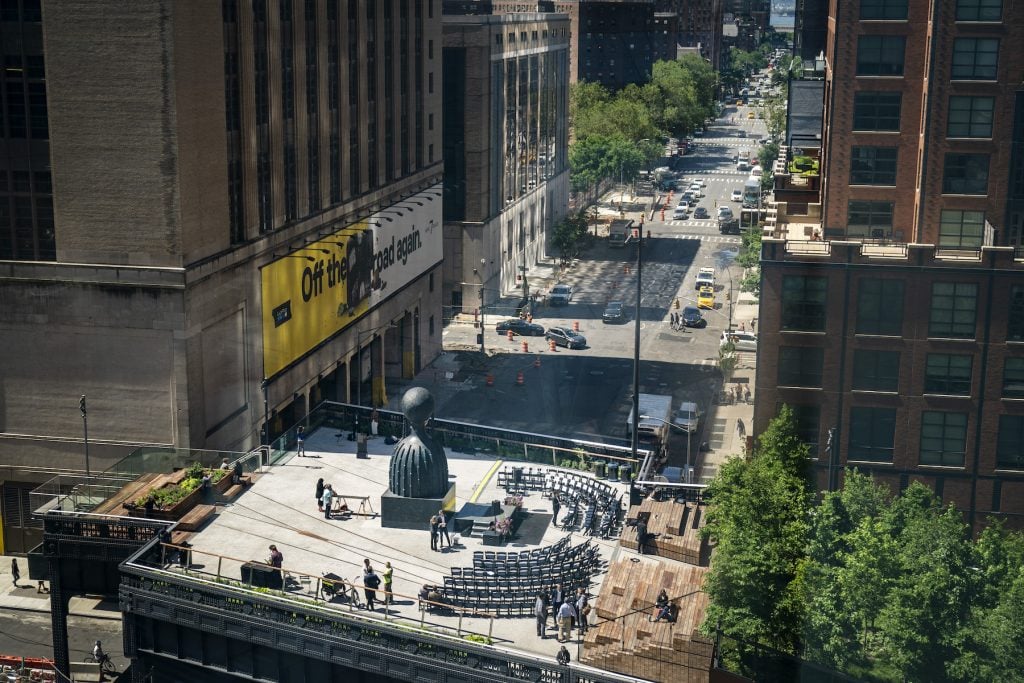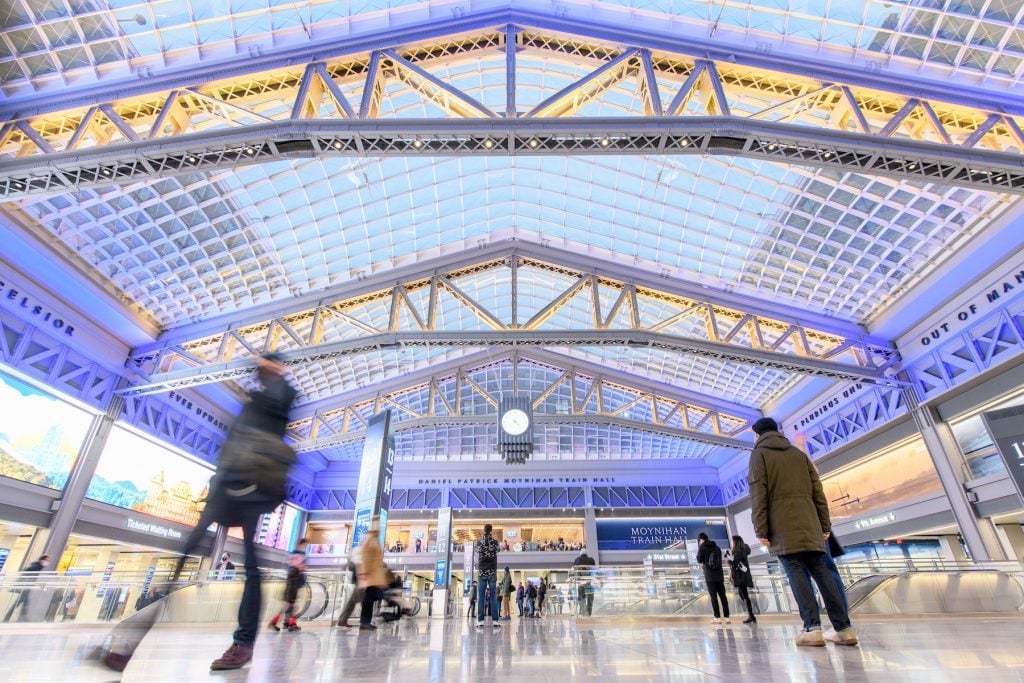Politics
The Art-Filled High Line Is Planning a $60 Million Expansion, Dubbed New York City’s ‘Most Ambitious Redevelopment in Decades’
What you need to know about Andrew Cuomo's plan to expand the High Line.

What you need to know about Andrew Cuomo's plan to expand the High Line.

Artnet News

There’s going to be a whole lot more High Line in Manhattan.
New York governor Andrew Cuomo has released plans for not one, but two, separate expansions of the popular elevated park.
In his 2021 State of the State address on Monday, Cuomo declared the two-pronged new High Line as “the most ambitious redevelopment that New York City has seen in decades.” It is, he says, intended to be the centerpiece of “a district-wide redevelopment of the West Side that will jumpstart the private market” post-lockdown.
The governor declined to offer a start date or a proposed completion date in an interview with the New York Times. Officials put the cost of the first new phase at $60 million, to be split between the state, the real-estate firm Brookfield Properties, and private philanthropy. Cuomo is publicly pinning hopes on infrastructure aid from the incoming Biden administration. But the hefty price tag is already raising eyebrows for an amenity that is little used by low-income residents or people of color, the Times reports.
The idea for the High Line was first born in 1999, when writer Joshua David and painter Robert Hammond bonded over their interest in the disused railroad segment. To date, the project—which hosts a vibrant public art program and has transformed the Chelsea gallery district into a tourist hub—cost $187 million to construct.

A view of the Moynihan Train Hall of Penn Station on its opening day on January 01, 2021 in New York City. (Photo by Roy Rochlin/Getty Images.)
Phase one of the new High Line, dubbed the High Line East Connection, envisions a short extension from the park’s current eastern terminus at 10th Avenue, presently the site of the High Line Plinth for large-scale public art projects. Swerving north between 9th and 10th Avenues, it connects to a plaza that in turn is designed to connect pedestrians to the newly opened Moynihan Train Hall, a part of the perennially congested (and newly art-filled) Penn Station.
In the governor’s official press release, Brookfield Property Group partner Ben Brown promises that the two-acre, L-shaped plaza, connected to his company’s Manhattan West development, will be “surrounded by 240,000 square feet of curated restaurants and shops and enlivened year-round with public events, art installations, and an ice rink programmed, in part, by the NHL.”
Phase two of the proposed park expansion, called the High Line North Connection, starts at the other terminus of the linear park at 34th Street. It would take pedestrians past the Javits Center before veering west over the West Side Highway and connecting to Pier 76. Currently operated by the NYPD as a tow pound, Cuomo proposes turning Pier 76 into a park.
News of the High Line’s expansion caught some by surprise. The enormously popular attraction, which connects to the Shed arts center and Hudson Yards luxury mall on one end and the Whitney Museum of American Art on the other, had been thought to be complete with its previous 2014 expansion.
In addition to touting the economic benefits of the new construction, Cuomo framed the expanded High Line as a way to relieve pedestrian congestion and provide a new access point into Penn Station and link to Hudson Yards. It “will offer safe passage for commuters, residents, and tourists navigating this booming area,” the press release states.
Pre-lockdown, levels of congestion on the High Line had already reached such heights that observers were given to joking that it needed its own system of public transportation.